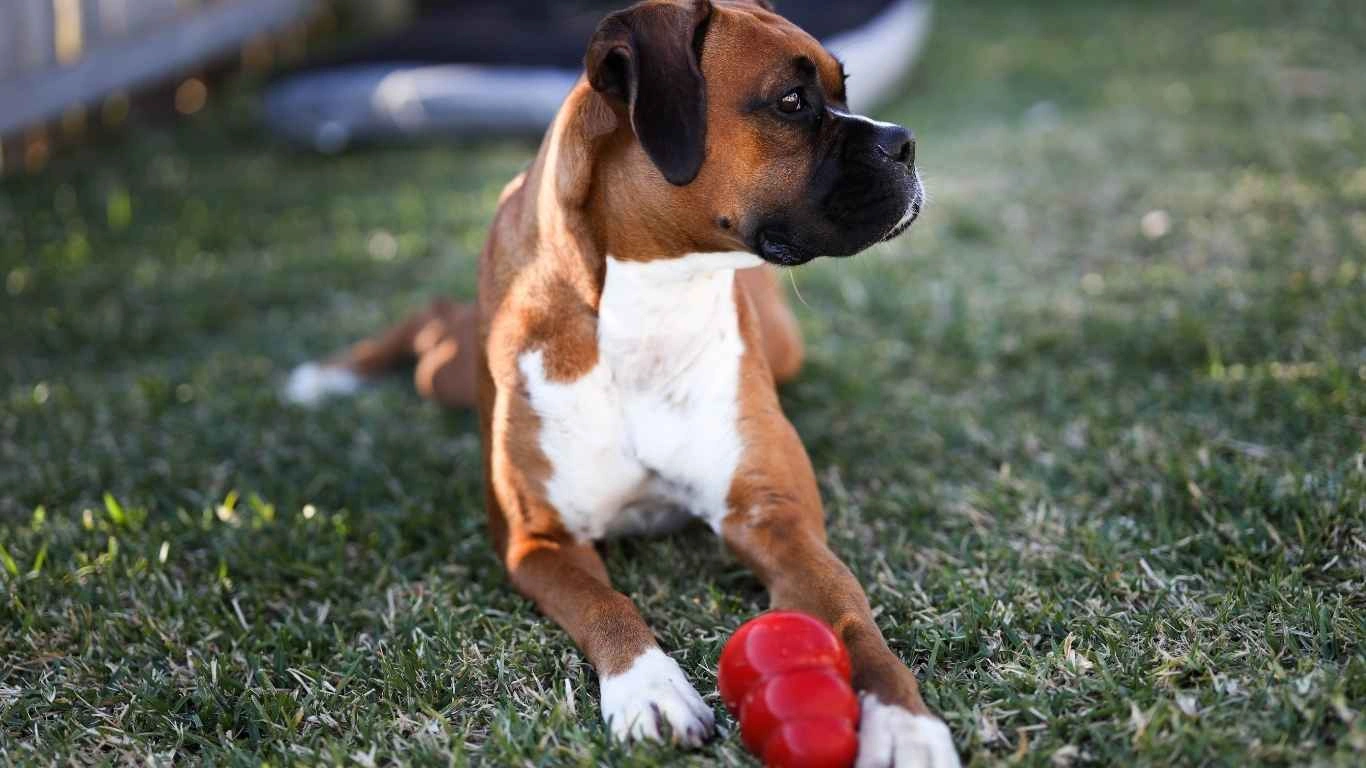Discover the Best Low-Phosphorus Food for Dogs with Kidney Disease Today
If you’re like me and have spent years working in shelters and pet clinics, you know just how heartbreaking it is to see a dog diagnosed with kidney disease. One of the first things we usually recommend – and pet parents often don’t realize – is adjusting the diet. Finding the best low-phosphorus food for dogs with kidney disease can make a world of difference in how these pups feel day-to-day. I’ve seen dogs perk up, gain back a bit of their spark, and even start wagging those tails again once they’re on the right food. It’s not a miracle cure, but it sure feels close sometimes.
Why Diet Matters So Much for Dogs with Kidney Issues

When kidneys start to fail, they can’t filter out toxins like they used to. That’s when phosphorus builds up in the bloodstream and causes all kinds of trouble – think nausea, fatigue, and even depression in dogs. The idea behind a kidney-friendly diet is to give the kidneys a break. Low phosphorus, moderate-to-low protein, and added omega-3s – that’s the general formula.
In my hands-on experience, even dogs who weren’t big eaters started showing interest when we introduced the right kind of food. There’s definitely a science to it, but there’s also a lot of heart. Watching a senior rescue who’s been struggling start licking their bowl clean? That hits home.
How to Spot a Good Low-Phosphorus Dog Food

Not all “kidney-friendly” foods are created equal. Trust me, I’ve read more labels than I can count, and sometimes the marketing doesn’t match the nutrition panel. Here’s what I tell pet parents to look for:
- Phosphorus content: Look for something under 0.5% on a dry matter basis if possible. Even under 0.7% can be beneficial depending on your dog’s stage.
- Protein: It’s a balancing act. Too little and you risk muscle loss, too much and the kidneys get overworked. Focus on high-quality, digestible proteins like egg or chicken.
- Added Omega-3s: These help reduce kidney inflammation. Look for fish oil or flaxseed oil in the ingredients.
- Palatability: You can have the healthiest food in the world, but if your pup won’t touch it… well, we’ve all been there. Taste matters!
One of my most memorable patients, a senior Beagle named Lucky, was completely uninterested in his prescription food. We ended up mixing in a renal-supportive topper – something soft, meaty, and low-phosphorus – and boom, he was eating again. Sometimes it takes a little experimenting, and that’s okay.
Prescription vs. Over-the-Counter: Which Is Better?

This question comes up a lot: do I really need a prescription diet, or can I just find something at the pet store? Here’s the truth – both can work, but it depends on your dog’s needs and how advanced the kidney disease is.
When Prescription Diets Shine
Prescription formulas like Hill’s k/d, Royal Canin Renal Support, and Purina Pro Plan NF are specifically formulated with the exact phosphorus, protein, and omega-3 ratios needed for dogs with moderate to severe kidney disease. These are usually what we start with in a clinic setting. They’re also closely regulated, which gives you peace of mind.
Over-the-Counter Options with Potential
If your dog is in earlier stages or simply won’t eat the prescription stuff, some non-prescription foods are surprisingly kidney-friendly. You just have to read labels carefully. Brands like JustFoodForDogs, Weruva, or even some formulas from Natural Balance can have lower phosphorus content, though it’s not always front and center.
I always recommend checking with your vet before making any switch, even if it’s just between flavors. Kidney care is all about consistency and minimizing the workload on those hardworking organs. That said, I’ve seen plenty of dogs thrive on non-prescription food when it’s done right – with guidance.
My Top Picks: Best Low-Phosphorus Food for Dogs with Kidney Disease

Alright, so here’s the part everyone’s been waiting for—my go-to list of foods that I’ve personally seen work wonders for dogs with kidney disease. This isn’t just pulled from packaging claims; these are options I’ve recommended to dozens of pet parents, and many times, they’ve come back to tell me it made all the difference.
- Hill’s Prescription Diet k/d Kidney Care – This one’s a staple. I’ve had success with both the canned and dry versions. Dogs seem to love the taste (especially the stew), and the phosphorus is kept at ideal levels. It also has added omega-3s, which is a nice touch.
- Royal Canin Veterinary Diet Renal Support – I love that it comes in different flavors and textures (A, E, F, etc.). If your pup turns their nose up at one variety, another might do the trick. I once had a picky senior Lab who wouldn’t touch anything except the Royal Canin “E” formula. Go figure.
- JustFoodForDogs Renal Support – This fresh, lightly cooked option is great if you’re looking for something less processed. It’s formulated by vets and nutritionists and has become more accessible in recent years. I’ve seen shy shelter dogs eat this straight from the bowl, tails wagging.
- Weruva Dogs in the Kitchen – Not prescription, but some varieties have lower phosphorus levels. Definitely worth looking into for early-stage kidney dogs or those who flat-out reject vet diets.
Quick tip from my clinic days: always introduce new food gradually—especially with sensitive kidneys. A sudden switch can upset their stomach or cause them to stop eating altogether. Slow and steady wins the race.
Homemade Diets: Are They Safe for Dogs with Kidney Disease?

This is such a hot topic, and I get it. A lot of pet parents want full control over ingredients, especially when their dog’s health is on the line. But I’ll be real with you—creating a balanced low-phosphorus food for dogs with kidney disease at home is no small feat.
The truth is, most homemade recipes floating around online aren’t formulated for dogs with CKD. They might be tasty and made with love, but they can unintentionally be too high in phosphorus or miss key nutrients.
When Homemade Can Work
If you’re working with a vet or a board-certified veterinary nutritionist, homemade meals can absolutely be part of your dog’s care plan. One family I worked with had a senior mixed breed who refused every prescription food we offered. They teamed up with a vet nutritionist and created a custom meal plan that included lean meats, white rice, and calcium carbonate to bind phosphorus. Their dog’s energy improved within weeks.
Key Ingredients to Consider
- Low-phosphorus proteins: Egg whites, cooked chicken breast, ground turkey
- Carbohydrates: White rice, pasta, sweet potatoes (easy on the stomach too)
- Phosphorus binders: Your vet may recommend one to add to homemade meals
- Supplements: Often needed to ensure vitamins and minerals are balanced
Again, homemade diets can be great when done right, but winging it is risky. I’ve seen dogs go months eating a well-meaning but imbalanced home-cooked diet, only to come back with worsened kidney values. Trust me—it’s worth looping in the professionals here.
Feeding Tips & Tricks for Picky Dogs with CKD

Let’s be honest—some dogs just don’t want to eat when they’re not feeling well. And kidney disease, unfortunately, comes with nausea, changes in taste, and overall loss of appetite. It can be stressful for both the dog and the person who loves them. But over the years, I’ve learned a few tricks that can help.
Simple Ways to Encourage Eating
- Warm up the food: Just a few seconds in the microwave (make sure it’s not too hot!) can release aroma and make it more appealing.
- Hand feeding: It takes patience, but it often works—especially for bonded pets who just need a little encouragement.
- Top with low-sodium broth: Adds flavor without loading up on harmful stuff.
- Try a new texture: Some dogs prefer soft food over kibble or vice versa. Variety helps!
I once cared for a Chihuahua with stage 3 kidney disease who flat-out refused her food—until her foster mom sat on the floor and hand-fed her bite by bite. That little dog lived another joyful two years. That’s the thing with CKD—it’s serious, but with the right support, many dogs still enjoy life and mealtimes.
Supplements and Phosphorus Binders: Extra Support for Dogs with Kidney Disease

From my years working as an Animal Care Specialist, I’ve learned that diet alone is often just one piece of the kidney care puzzle. Supplements and phosphorus binders can provide some much-needed backup to help those kidneys stay as healthy as possible. Of course, every dog is unique, so it’s important to work closely with your vet to tailor these extras to your dog’s specific needs.
What Are Phosphorus Binders, and Why Are They Important?
When kidneys struggle to filter phosphorus out of the bloodstream, phosphorus binders can step in to trap excess phosphorus in the gut so it passes out of the body rather than building up in the blood. This helps reduce the strain on the kidneys and slows down disease progression. I remember one patient, a senior German Shepherd, who really benefited from this—his energy levels improved after starting binders alongside his diet.
Common Supplements That Help
- Omega-3 fatty acids: These are well-known for their anti-inflammatory properties. Fish oil supplements can help reduce kidney inflammation and support overall health.
- Antioxidants: Vitamins E and C may help protect kidney cells from damage caused by oxidative stress.
- B-complex vitamins: Kidney disease often causes dogs to lose these through urine, so supplementing can keep energy levels steady.
- Probiotics: Some studies suggest they might help reduce toxin buildup by improving gut health, though this is still an emerging area.
I’ve always emphasized to pet parents the importance of not adding supplements without vet approval, especially with kidney disease—because sometimes, too much of a “good thing” can actually cause harm. The vet can recommend safe brands and dosages based on lab work and your dog’s overall health.
Hydration Is Key: Keeping Your Dog’s Kidneys Happy

One of the simplest yet most overlooked ways to support dogs with kidney disease is keeping them well-hydrated. Healthy kidneys need plenty of water to flush out toxins, and dogs with kidney issues often don’t drink enough on their own. Over the years, I’ve found a few easy hacks to encourage hydration:
- Fresh water, always: Change the water at least twice daily. Some dogs prefer running water, so a pet fountain might be worth trying.
- Add water to their food: Mixing in a bit of warm water with dry or canned food can increase fluid intake.
- Offer low-sodium broth: This can entice dogs to drink more and add flavor to their meals.
- Ice cubes as treats: Some dogs love licking or chewing ice, which adds fluids in a fun way.
I recall a senior Collie who was notoriously stubborn about drinking water. Adding a splash of low-sodium chicken broth to her bowl turned hydration into a game, and her kidney numbers stabilized much better after that simple change.
Monitoring Your Dog’s Progress at Home
In my clinic days, I always encouraged pet parents to keep an eye on a few key signs at home because early detection of changes can make a huge difference in managing kidney disease. Here’s what I suggest looking out for:
- Appetite changes: Sudden refusal or reduced interest in food can signal worsening kidney function or nausea.
- Water intake and urination: Increased thirst and more frequent urination can be common but should be tracked and discussed with your vet.
- Energy levels: Lethargy or weakness might indicate toxins building up or anemia related to kidney failure.
- Weight fluctuations: Weight loss is a common red flag in chronic kidney disease.
- Vomiting or diarrhea: These can be signs of toxin buildup or dietary intolerance.
Keeping a journal or notes can be incredibly helpful during vet visits. I’ve seen how detailed records help vets fine-tune treatments and nutrition plans to keep dogs comfortable longer.
Final Thoughts on the Best Low-Phosphorus Food for Dogs with Kidney Disease
Navigating kidney disease can be overwhelming, but remember—you’re not alone. From my years in shelters and clinics, I’ve met so many incredible dogs and dedicated owners fighting this battle together. Finding the right low-phosphorus food for dogs with kidney disease is a huge step, but it’s just one part of a larger, compassionate care plan that includes hydration, supplements, and vigilant monitoring.
Always partner closely with your vet, be patient with your pup’s tastes and preferences, and don’t be afraid to ask for help. The difference you make by adjusting diet and care could mean months or even years of quality time with your furry friend.
References
- American Gastroenterological Association
- American Veterinary Medical Association
- American College of Veterinary Nutrition
- World Small Animal Veterinary Association
Disclaimer
This article is intended for informational purposes only and does not substitute professional veterinary advice. Always consult your veterinarian before making any changes to your dog’s diet or treatment plan, especially when managing chronic conditions like kidney disease.





